If forage areas are damaged by hail, a decision must be taken on how to proceed. The degree of damage determines whether the crop can be waited for or must be harvested. As a rule, it is recommended to harvest immediately. The plants are often so badly damaged that no further growth can be expected. The longer you wait, the worse the silage suitability and forage quality will be. Where the hailstones have damaged and slashed the plants, rot and mildew very quickly set in. Damaged leaves become parchment-like withered and are difficult to silage.
Maize plants severely damaged by hail. Immediate harvesting is recommended here.
In the case of such a damage pattern, the crop must be observed and regularly checked for fungal growth. If necessary, the harvest date should be preferred.
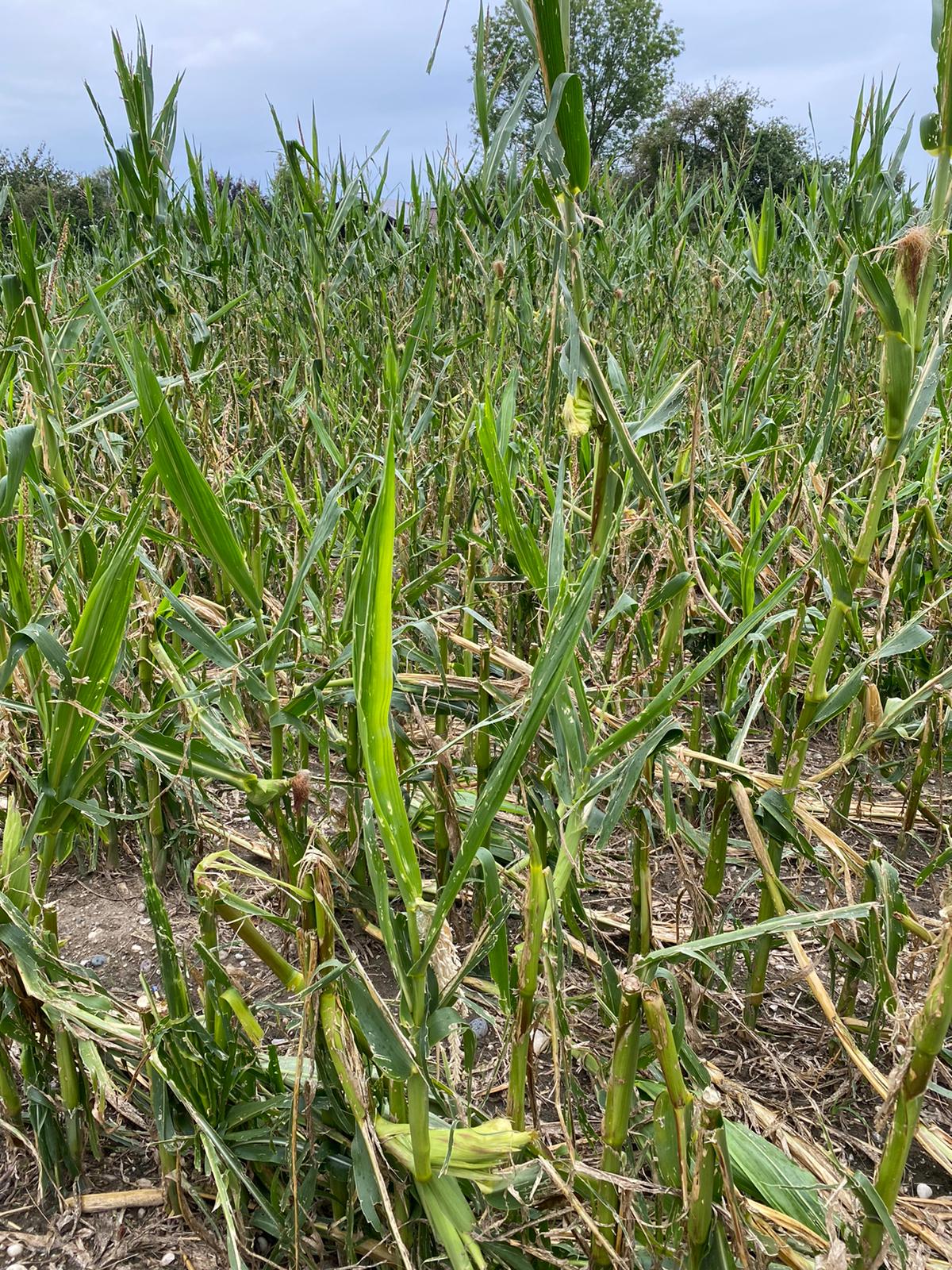
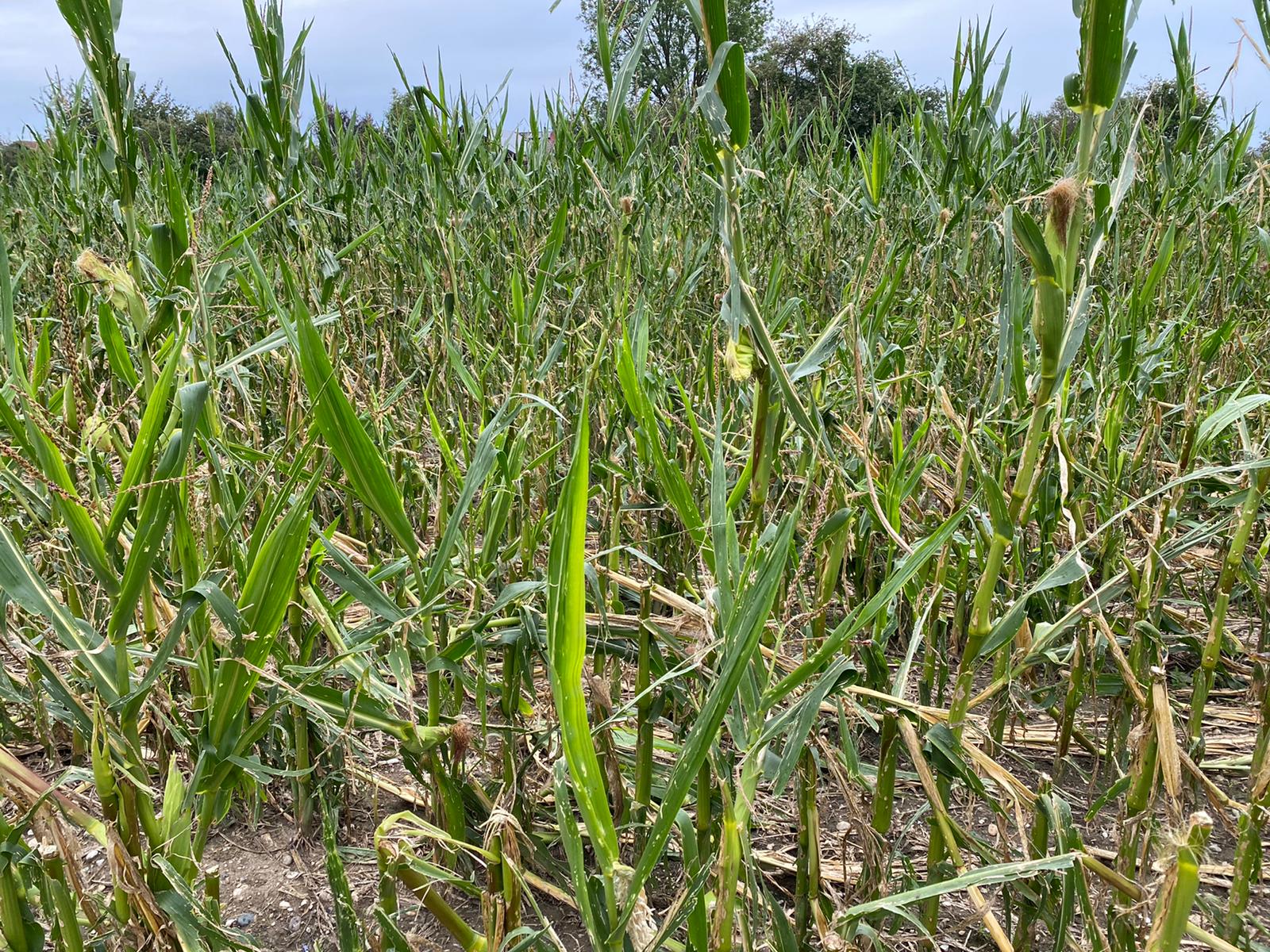
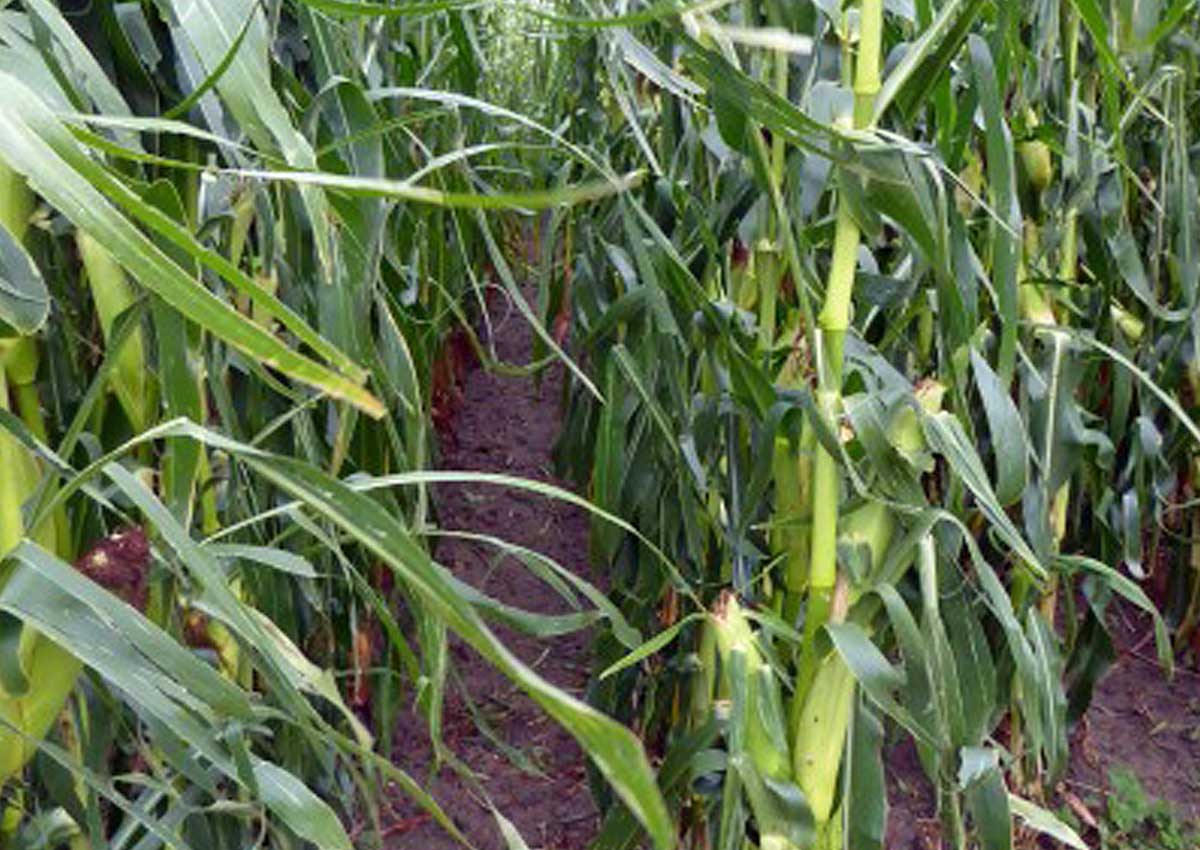
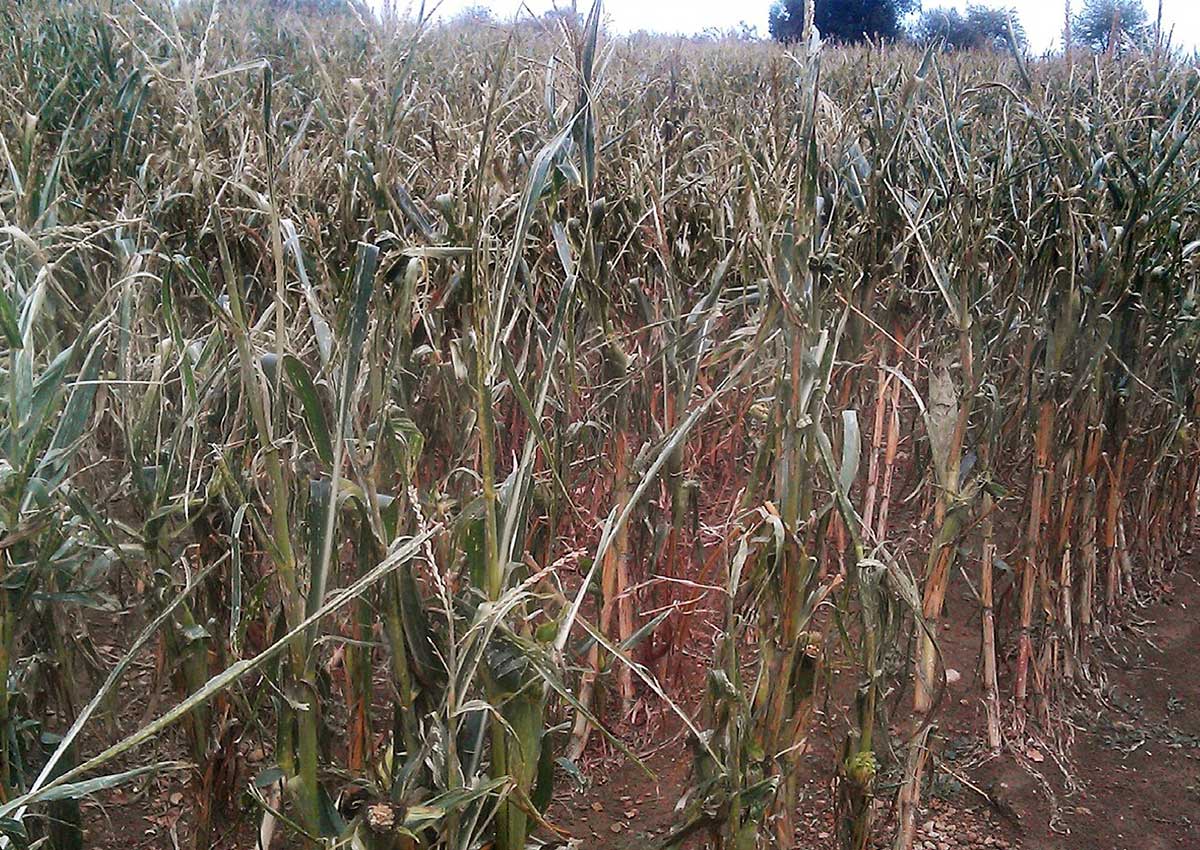
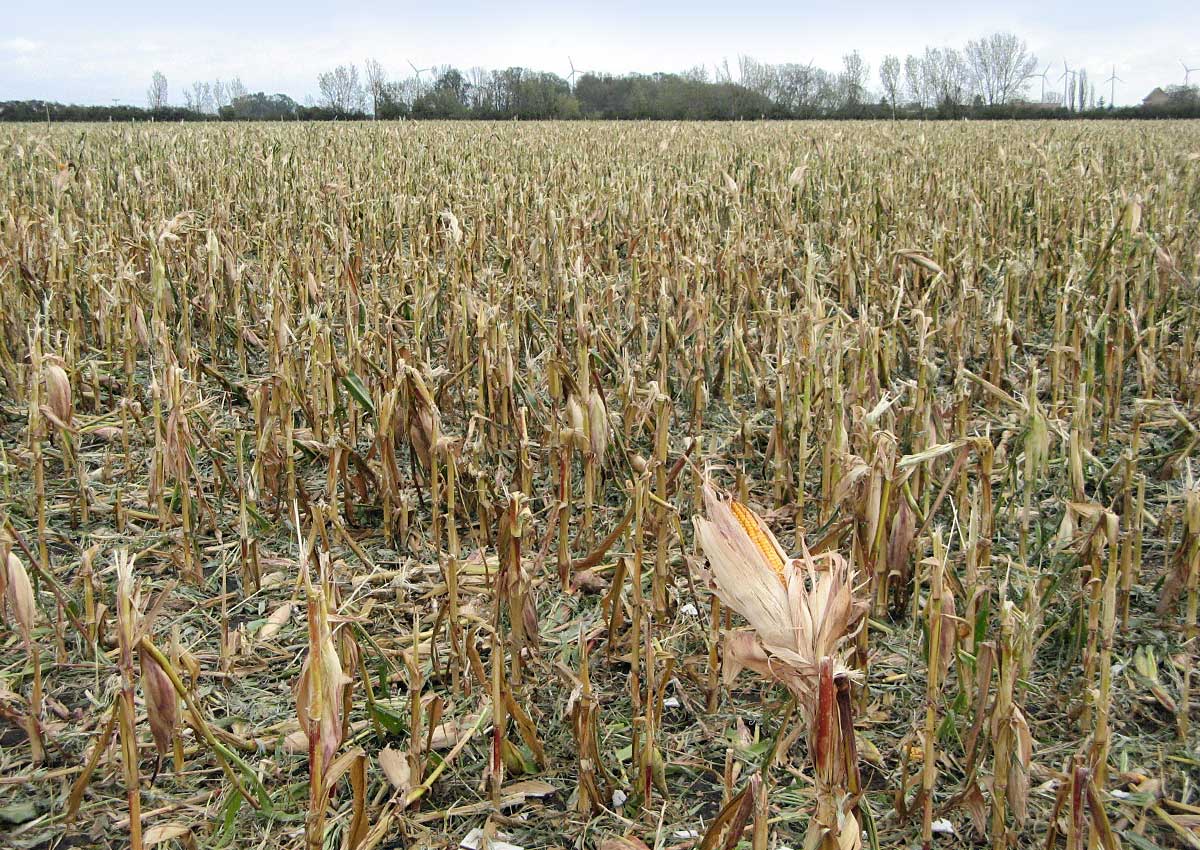
In the lower area the plants are often heavily polluted by high sprayed soil. This also has a negative effect on the silage suitability. Depending on the dry matter content, the occurrence of fermentation juice should also be expected. The use of silage additives is recommended to support silage production. If it is field grass, Siloferm supports lactic acid fermentation and prevents malfermentation. If, on the other hand, silage maize is involved, BioCool should be used to ensure aerobic stability.